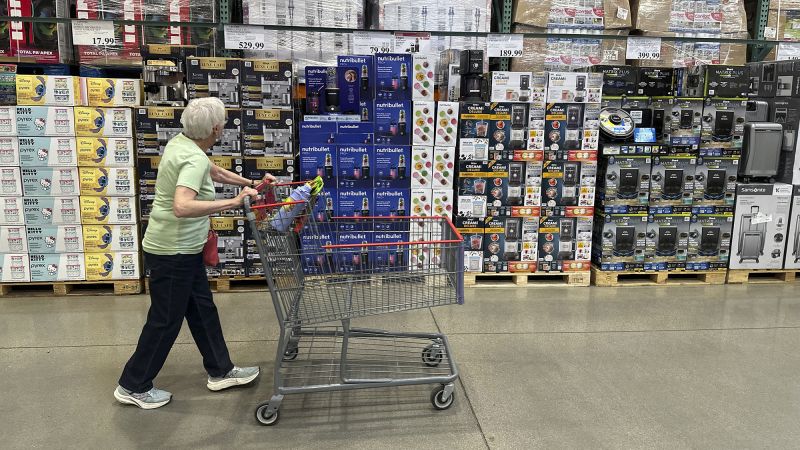- Get link
- X
- Other Apps
- Get link
- X
- Other Apps

American Consumers Feeling the Squeeze: A Deep Dive into Household Finances
The American consumer, the engine of the US economy, is facing increasing financial pressures. Lingering high inflation, coupled with elevated interest rates, has made it challenging for many to stay ahead. Adding to the complexity, recent policy shifts, including potential tariff increases, are stoking uncertainty and impacting consumer sentiment.
But how exactly are these pressures manifesting? Let's break down the key indicators:
1. The Debt Tightrope:
Americans' financial landscape has shifted dramatically since the pandemic.
- Initially, stimulus checks and payment pauses allowed many to pay down debt and build savings.
- However, the post-pandemic recovery saw credit card balances surge, fueled by pent-up demand and rising costs.
- By the end of last year, managing debt became increasingly difficult, with a significant portion of households facing levels of overextension not seen since the Great Recession.
2. Delinquency on the Rise:
A concerning trend is the increasing number of households falling behind on their payments.
- The share of households becoming seriously delinquent on auto loans and credit cards has hit 14-year highs.
- The resumption of student loan payments after a 3.5-year pause has added further strain, with delinquencies jumping significantly.
- Matt Schulz, chief credit analyst at LendingTree, notes that adding student loans back into the mix has proven "a bridge too far for a lot of people."
3. The Buy Now, Pay Later (BNPL) Conundrum:
BNPL services have gained popularity, offering consumers flexible payment options. However, they also present potential risks.
- While BNPL can be a useful tool for managing expenses, it can also lead to overspending, especially when stacking multiple installment loans.
- A Bankrate survey revealed that nearly half of all BNPL users have experienced at least one problem, with overspending being the most common.
- Alarmingly, an increasing number of people are using BNPL to purchase essential items like groceries, signaling financial distress.
- According to LendingTree surveys, one in four BNPL users are using these loans to buy groceries, up from 14% a year ago.
4. Plummeting Consumer Sentiment:
Economic headwinds are taking a toll on how Americans feel about the economy.
- Consumer sentiment has been declining in recent months, with the University of Michigan's consumer sentiment index remaining near a record low in May.
- Concerns about trade wars and policy uncertainty are contributing to this pessimism.
- Elizabeth Renter, NerdWallet’s senior economist, aptly describes the situation: "Economic policy is in a state of near-constant flux, and with that, so too are consumer feelings about the economy."
Silver Linings?
Despite these challenges, there are glimmers of hope. Recent Commerce Department data indicates stronger-than-expected income growth in April, with people bolstering their savings accounts. This could provide a cushion against potential negative impacts of tariffs.
Gary Schlossberg, market strategist at Wells Fargo Investment Institute, suggests that "solid income growth and a more elevated saving rate should help cushion households from the brunt of inflation’s tariff-related increases in coming months, resulting in a second-half ‘soft patch’ for the economy rather than a bona fide recession."
Looking Ahead
The coming months will be crucial in determining the trajectory of the American consumer. While challenges persist, resilience and adaptability remain key. By understanding the evolving economic landscape and making informed financial decisions, consumers can navigate these turbulent times and build a more secure financial future.
Tags: US economy, high inflation, interest rates, Trump tariffs, consumer spending, debt, defaults, financial strain, economic uncertainty, recession, BNPL, student loans
Source: https://edition.cnn.com/2025/06/01/economy/consumer-student-loans-debt-squeeze-dg
Consumer spending
debt
defaults
Economic uncertainty
financial strain
high inflation
Interest rates
recession
Trump tariffs
US economy
- Get link
- X
- Other Apps
Comments
Post a Comment